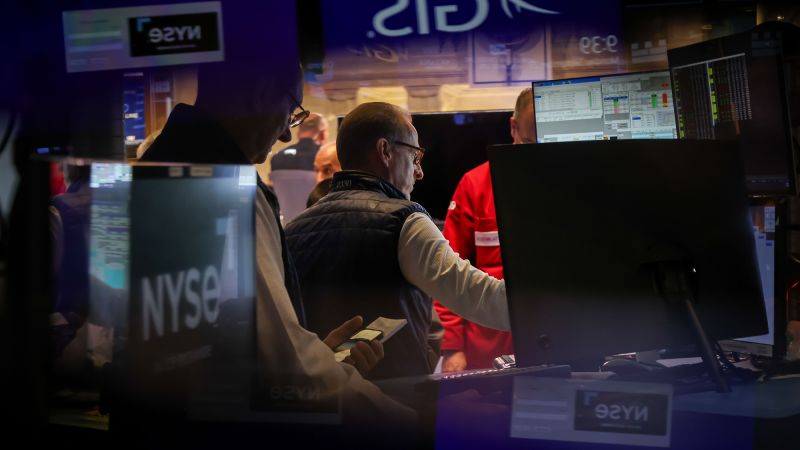Stock Futures Rally as Banks Lead Earnings-Driven Market Momentum

Stock Futures Rise Amid Strong Earnings Reports
Stock futures climbed steadily as earnings season gained momentum, buoyed by robust results from major banks. On Wednesday, the S&P 500 experienced a choppy session but managed to close higher, driven by optimism around solid quarterly performances. Morgan Stanley and Bank of America notably exceeded market expectations, with Morgan Stanley’s revenue reaching $18.22 billion and earnings per share outperforming estimates. Both banks showed impressive growth in deposits and loan business, contributing to gains in their stock prices.
Market Reactions and Sector Highlights
Investor confidence was further supported by strong trading revenue and raised earnings forecasts, pushing Morgan Stanley shares to record highs during the day. The broader market showed resilience despite geopolitical concerns, including escalating trade tensions between the US and China. Technology stocks, particularly chip makers, also rallied alongside financials, highlighting a diverse market recovery as earnings reports continue to shape sentiment.
Outlook as Earnings Season Progresses
As more companies release their quarterly results, market participants remain focused on earnings surprises and forward guidance. The encouraging start from leading banks sets a positive tone, suggesting that the market may sustain its upward momentum if other sectors report similarly strong performances in the coming weeks.
About the Organizations Mentioned
Morgan Stanley
Morgan Stanley is a premier American multinational investment bank and financial services firm headquartered in New York City, established on September 16, 1935, following the Glass-Steagall Act that mandated the separation of commercial and investment banking[1][2]. Founded by Henry Sturgis Morgan (grandson of J.P. Morgan) and Harold Stanley, the firm initially focused on investment banking, quickly capturing a 24% market share in public offerings and private placements in its first year[1][2]. The company has evolved into a global powerhouse with over 80,000 employees across more than 40 countries, serving corporations, governments, financial institutions, and high-net-worth individuals[2][3]. Its business is organized into three main divisions: Institutional Securities, Wealth Management, and Investment Management[2]. Institutional Securities offers services including capital raising, underwriting, mergers and acquisitions advisory, and restructuring, catering to major corporate and governmental clients[1][2]. Wealth Management and Investment Management provide financial advisory and asset management services to individuals and institutions. A significant milestone in Morgan Stanley’s history was the 1997 merger with Dean Witter Discover & Co., which expanded its retail brokerage and wealth management capabilities; the company reverted to the Morgan Stanley name in 2001[2]. The firm is recognized as systemically important by the Financial Stability Board, reflecting its critical role in the global financial system[2]. Morgan Stanley’s legacy includes underwriting major public offerings post-World War II, such as for General Motors and IBM, fueling technological and industrial growth[4]. The firm also emphasizes sustainable investing through its Institute for Sustainable Investing, aiming to leverage private capital to address environmental and social challenges[5]. Celebrating over 90 years, Morgan Stanley remains a leader in finance with a commitment to innovation, client service, and responsible investing[3][5].
Bank of America
Bank of America, one of the largest financial institutions globally, was founded in 1904 as the Bank of Italy by Italian immigrant Amadeo Peter Giannini in San Francisco. Giannini’s mission was pioneering for its time: to serve immigrants and "the little fellows" often overlooked by other banks, reflecting a commitment to inclusive banking[1][2][3]. The bank officially adopted the name Bank of America in 1930 and grew significantly under Giannini’s leadership, who became a key figure in 20th-century American banking[1][7]. Throughout its history, Bank of America has expanded through major mergers and acquisitions, including the 1992 merger with Security Pacific Corporation, which created the nation’s second-largest bank, and the 1998 acquisition of NationsBank, which led to the formation of the current Bank of America Corporation headquartered in Charlotte, North Carolina[1][2][3][4]. It further expanded its wealth management and investment banking capabilities by acquiring Merrill Lynch during the 2008 financial crisis, establishing a strong presence in these sectors[2]. Bank of America today serves a broad client base encompassing individuals, small and middle-market businesses, large corporations, and governments, offering a comprehensive range of banking, investment, and financial risk management products and services. It operates approximately 4,600 banking centers and 16,000 ATMs across the U.S. and maintains a global commercial banking footprint[2][3][5]. Its wealth management unit is the second largest worldwide, managing over $1 trillion in assets[2]. Notable achievements include pioneering the general-purpose credit card, which evolved into the widely used Visa card, and introducing one of the first home banking products in 1983, allowing customers to manage finances electronically[4][8]. The bank has demonstrated resilience through economic challenges, repaying government aid after the 2008 crisis and maintaining strong customer satisfaction, as recognized by J.D. Power awards[2][








